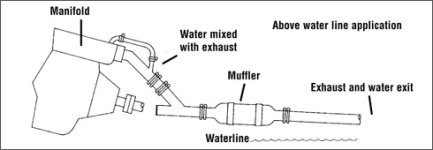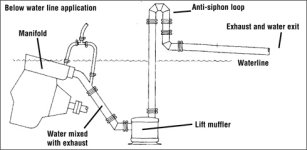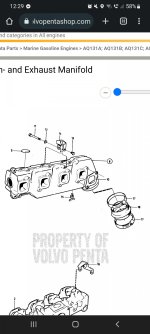We purchased houseboat with aq131a and 275 leg .this is 3rd time I had this issue I beach boat for few days then before we leave I check engine oil and I can see that engine is full of water. To top of dipstick tube .. I pumped it out took plugs out and when I cranked over there was some water that was in 3rd cylinder. How is water filling up engine? Though the exhaust to the cylinder then past rings? I'm stumped . There is a bellow with a baffle between leg and a hull is it leaking by it as its not sealing fully? Previous owner said that as long I dont beach the boat but let it float this shouldn't happen but that doesn't seam right. Water should not flow back to the engine that easy. Any ideas?
Home
Outboard Motor Parts
Chrysler outboard parts Evinrude outboard parts Force outboard parts Honda outboard parts Johnson outboard parts Mariner outboard parts Mercury outboard parts Suzuki outboard parts Tohatsu outboard parts Yamaha outboard partsInboard & Sterndrive Engine Parts
Chrysler Marine inboard parts Crusader Marine parts MerCruiser sterndrive parts OMC sterndrive parts Pleasurecraft Marine parts Volvo Penta marine parts + MoreAll Engine Brands
All Manuals HomeOutboard Repair Manuals
Chrysler outboard manuals Evinrude outboard manuals Force outboard manuals Honda outboard manuals Johnson outboard manuals Mariner outboard manualsMercury outboard manuals Nissan outboard manuals Suzuki outboard manuals Tohatsu outboard manuals Yamaha outboard manuals
Inboard & Sterndrive Engine Manuals
MerCruiser sterndrive manuals OMC sterndrive manuals Volvo Penta marine engine manualsPlease Note
MarineEngine.com does not offer troubleshooting assistance or repair advice by email or by telephone.
You are invited to join our public Boat Repair Forum to seek assistance from other members.
You may also visit the Boat Motor Manuals section of our site to obtain a service manual.




